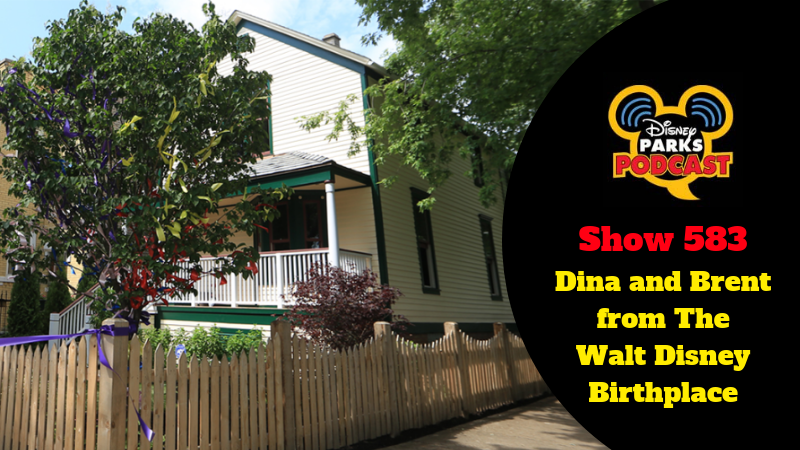
Disney Parks Podcast Show #583 – Dina and Brent from The Walt Disney Birthplace
In today’s show, we talk with Dina and Brent from the Walt Disney Birthplace.
Explore our Etsy shop brimming with fun Disney items.
All the Disney Parks in One Podcast

Disney Parks Podcast Show #583 – Dina and Brent from The Walt Disney Birthplace
In today’s show, we talk with Dina and Brent from the Walt Disney Birthplace.
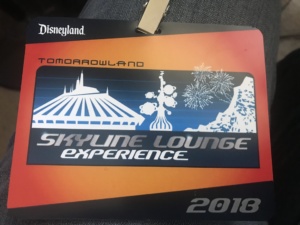
Lanyard for Skyline Lounge Experience 2018
Watching the fireworks at Disneyland is a challenge. Many people line the streets in front of Sleeping Beauty Castle hours before the 9:30 pm showtime. I am not one to wait around. There are alternate places to walk up at the last minute, such as Rivers of America and It’s a Small World area. Yet, you don’t get to see the projections on the castle, flying Tinkerbell, or the fireworks right at the castle. There is reserved seating on benches at the castle, but that is for invited guests or guests that had VIP tours that day.
Disneyland has lacked the Fireworks dessert parties that other Disney Parks have offered for years. At Walt Disney World, you can attend dessert parties for nighttime entertainment at all four parks: Magic Kingdom, Disney’s Hollywood Studios, Epcot, and now Animal Kingdom. Even Disneyland’s neighbor, Disney California Adventure, has offered a World of Color Dessert Party and now a Paint the Night Dessert Party.
If you are looking for a relaxing place to watch the fireworks from afar, try the Tomorrowland Skyline Lounge Experience! I brought my Dad to Disneyland for the day and gave him my own VIP tour of the best of the Disneyland Resort. My Dad has not visited Disneyland in about 10 years. We visited on Disneyland’s 63rd Birthday. He enjoyed a multitude of rides using Maxpass, Carthay Circle Restaurant for lunch, and the Tomorrowland Skyline Lounge Experience to end the night.
The Skyline Lounge opened about a year ago and has quietly kept it’s place on the second level of the Star Wars Launch Bay. Reserve your spot in the same way that you reserve table service restaurants at the resort. The cost is $50 per person, no discounts, and is paid when you arrive at the lounge that night. The lounge has several couches and high top tables with bar stools and chairs. For the best seat choice, arrive 15 minutes prior to 8:00pm when the lounge opens. You are able to come and go during the 2 hours that the lounge is open without losing your seat.
A host will help you take your dessert box and drinks to an available table or couch of your choice. Drinks are unlimited, but the dessert box is the only food available. There are cans of Coke, Diet Coke, Sprite, and Perrier. Coffee and hot tea are also available. Your host will offer you games, Jenga or Connect Four, to play while you wait for the fireworks. They also offer blankets because Southern California nights can be a bit cooler, especially up on the second level of the Launch Bay building.
A surprise from the night was a visit from Minnie Mouse. Disney’s website did not mention character visits. Minnie spent time taking group and individual photos with all of the guests in the lounge.
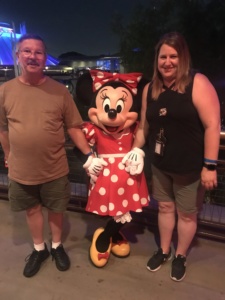
The reason we book the lounge is for the fireworks views. Anaheim was quite windy that day, and the fireworks were delayed by about 10-15 minutes. Disney’s website says does not guarantee the fireworks. Fireworks are often cancelled at Disneyland due to winds. If fireworks are cancelled, I do not know if you will receive a partial refund of your lounge experience. A downside of the high top tables and bar stools is that the tops of the fireworks are cut off. You are asked not to lean on the railing for viewing of the fireworks. Most of the guests who were seated on the couches remained there to watch the fireworks. I would recommend arriving early for couch seating.
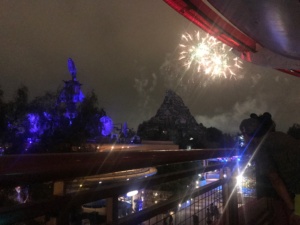
Firework view from the Skyline Lounge
Overall, I would recommend ending your day with this lounge experience. It was a great to have a seat and wait for the fireworks. The desserts were quite tasty, even as breakfast the next day! We did take the box home because we had a full day of meals and snacks already. Since the desserts come in a take-out style box, it was easy to close up and take the uneaten treats home.
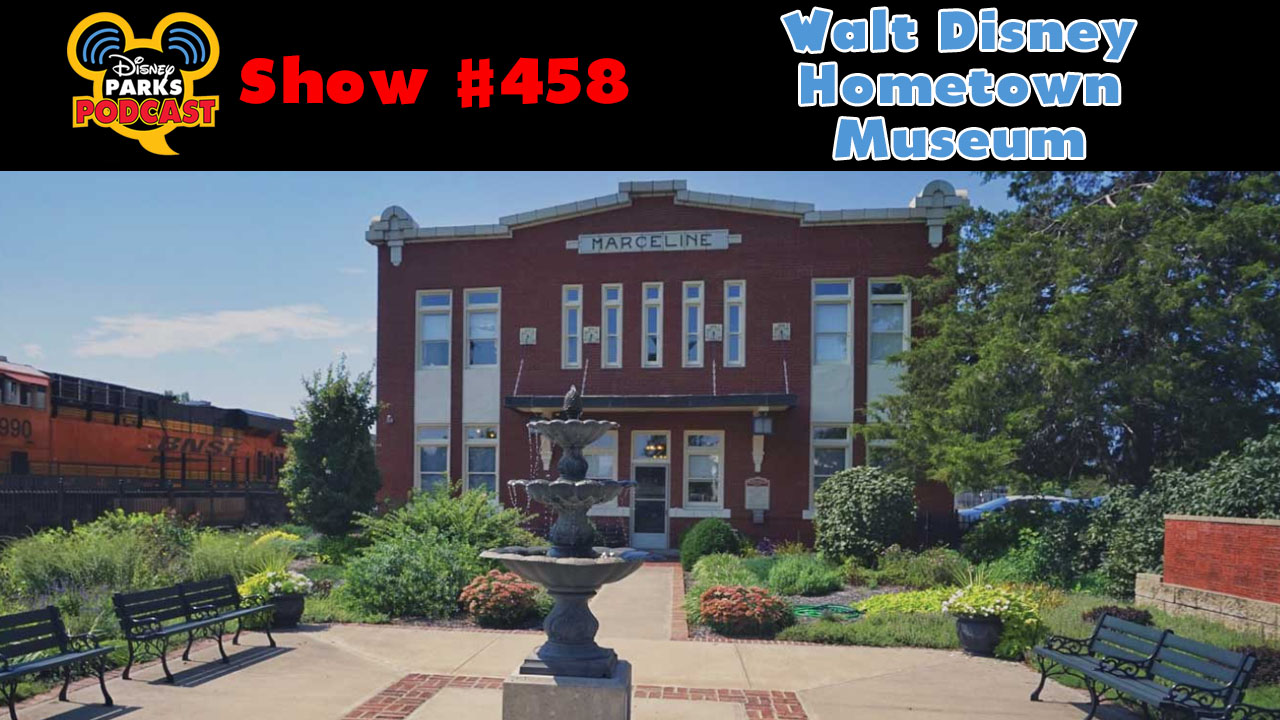
Disney Parks Podcast Show #458 – The Walt Disney Hometown Museum
In this episode, Tony and Parkhopper John chat with Kaye Malins and the Walt Disney Hometown Museum from Marceline and so much more!
Disney Parks Podcast Show #440 – An Interview With The Executive Director of The Walt Disney Family Museum
In this episode, Tony and Parkhopper John discuss have a conversation with The Executive Director of The Walt Disney Family Museum and find out what its all about!
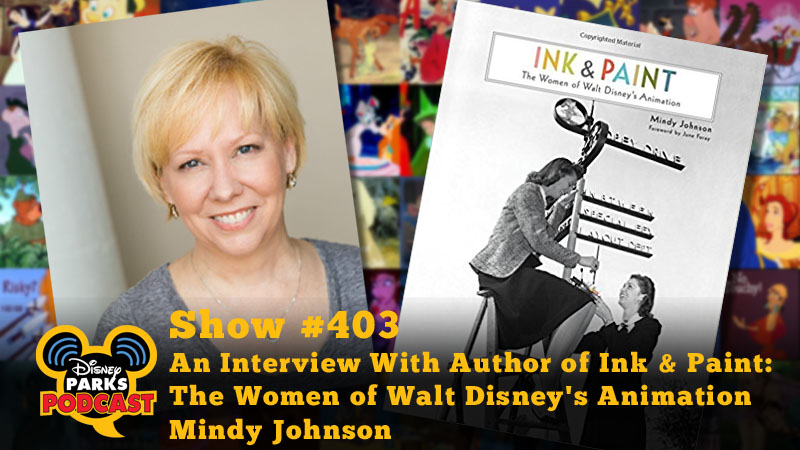
Disney Parks Podcast Show #403 – An Interview With Author of Ink & Paint: The Women of Walt Disney’s Animation Mindy Johnson
In this episode, Tony and Parkhopper John interview Mindy Johnson who recently authored the book Ink & Paint: The Women of Walt Disney’s Animation, we discuss the rich history of the Ink and paint department.
Vist Mindy at Mindy Johnson Creative
Bu the book Ink & Paint: The Women of Walt Disney’s Animation
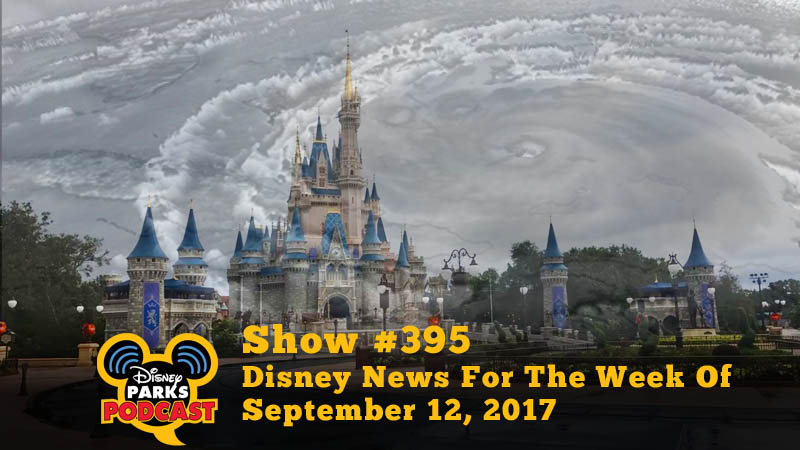
Disney Parks Podcast Show #395 – Disney News For The Week Of September 12, 2017
In this episode, Tony and Parkhopper John discuss Hurricane Irma, X Atencio’s death, new special events coming to Walt Disney World Resort, and so much more!
Every Disney fan acknowledges that throughout his lifetime, Walt Disney always thought on a grandiose scale. Even as a child, Walt wanted to do it bigger and better than the other guy, and always put more than 100% in every endeavor he pursued. He was the first to perfect synchronized sound and voice to his Mickey short cartoons, the first to apply the 3-color strip Technicolor process to “Flowers and Trees” silly symphony cartoon, and in retrospect, take the biggest gamble in his career; in producing the first animated cartoon full-length feature film, “Snow White and the Seven Dwarfs” which even his wife Lillian and his Brother Roy thought would be his downfall. But Walt Disney was also a man who thought outside the proverbial box. Walt Disney, early on became infatuated with the world of miniaturization, i.e. everyday items brought down to Lilliputian size, but with an attention to detail that was second to none. And believe it or not, it was Walt’s love of this miniature world that gave rise to, none other than Disneyland itself.
It is hard to pin down just when Walt became enamored with this pastime, but throughout his career, Walt had always looked for a hobby to help him forget, at least for a time, the pressures of the studio. He had tried Polo, golf, bowling but never settled on anything for long. One of his greatest hobbies was Railroading and his love of trains. This love actually transposed into why there is a train circling the Magic Kingdom. Walt in the early 30’s helped his nephew Roy E. Disney build a Lionel train layout, and more then probable, was involved in building miniature props and accessories for the track.
More than likely, the impetus that got Walt into this demanding hobby was an exhibit he saw at the Golden Gate International Exposition, held at San Francisco’s Treasure Island in 1939-40. This was a World’s Fair, and among its many exhibits was one by Mrs. James Ward Thorne (Nee- Narcissa Niblack Thorne). Mrs. James Ward Thorne was additionally heir to the Montgomery Ward department store fortune. Mrs. Thorne too was an avid collector and displayer of miniature dioramas, utilizing Lilliputian objects of uncompromising detail. Her displays represented American and European rooms, all from different eras. The rooms were fashioned in such detail, most viewing them actually believed they were in that time period. Walt Disney was captivated, to say the least.
Walt’s interest in miniatures grew throughout his lifetime, and between his own creations and his world-wide collections, in the late 1960’s, his collection included more than a thousand pieces, comprising of paintings, books, eleven classic cars, a 1915 Model T Ford, 1903 Cadillac, 1904 Rambler, and a 1911 Rolls Royce. There was also a model battleship and steamboat. Included were musical instruments such as banjos, a mandolin, a guitar and an organ, crafted by conductor Frederick Stark. There was even a set of dueling pistols and a leather case with fourteen miniature six-shooters. It was an impressive display.
[supsystic-slider id=10 position=”center”]
It was Walt Disney’s love of trains that started him into seriously creating these miniatures for himself. When he built his “Carolwood Pacific” 1/8 scale working steam railroad in his backyard, he almost single-handedly built the small caboose himself. This caboose sported miniature brass doorknobs, oil lamps and spring latches. It was for this caboose that Walt made his first major piece…A pint-sized potbellied stove. He said… “I had a pattern made up, and it turned out so cute with the grate, shaker and door, and all the little working parts, I became intrigued with the idea,” Walt wrote. “I had a few made up: one was bronze, another black, and I even made a gold one! Then we made more and started painting them in motifs that fitted the period at the turn of the century.” The stoves were 5 ½ tall, and each had a different design. Walt made about one hundred; giving them out as gifts to friends, and even sent a few to an antique shop in New York, where Mrs. Thorne actually bought two for her own collection. He made no profit on the stoves, which he charged $25.00, he was just intrigued if they would sell. After, Walt said… “It has been fun making them and others appreciate them, too, so all in all, I feel well repaid,”
Although Walt was building small, he always thought big. These miniatures and tableaus gave Walt the idea of creating entire miniature worlds. He originated the idea of creating miniature scenes of life in an old Western Town. Walt conspired with animator Ken Anderson and told him his idea. He said…: “I’m tired of having everybody else around here do the drawing and the painting. I’m going to do something creative myself. I’m going to put you on my personal payroll, and I want you to draw twenty-four scenes of life in an old Western town. Then I’ll carve the figures and make the scenes in miniature. When we get enough of them made, we’ll send them out as a traveling exhibit. We’ll get an office here at the studio and you and I will be the only ones who’ll have keys.”
With the plans set in motion, Walt in addition to creating his own miniatures, began seeking out all kinds of miniatures for his dioramas. In order to keep prices becoming bloated because of his name, he asked Kathryn Gordon and Dolores Voght Schott, two secretaries at the studios to use their name. One ad read…
“WANTED: Anything in miniatures to a scale of 1 ½” to the foot or under. Up to and including early 1900’s. Give full description and price. Private collector. K. Gordon (and her address).” Over time, Walt had miniature tea services, wine and perfume bottles, silverware, candelabra’s, jugs and Wedgwood pitchers. The first scene Walt labored on was the cabin seen in the live action feature “So Dear to my Heart” This was the cabin Granny Kincaid lived in, and the detail was astounding. Inside was a braided rug, and the floor was made of planks the size of matchsticks. There was a spinning wheel, a guitar, a flintlock rifle was hanging on the wall and even a bible was set on the miniature table. Walt constructed the chimney out of pebbles he picked up at the Smoke Tree Ranch. Although Granny herself was never made, Walt had Beulah Bondi, the actress who portrayed Granny in the film, narrate on a recording, as Granny describing the inside scene.
This tableau gave rise to Walt’s idea of an Americana exhibit he called “Disneylandia”. He envisioned a complete western town, to be showcased around the country. The cabin was unveiled at the Festival of California Living in the Pan Pacific Auditorium in Los Angeles from November 28 to December 7, 1952, with the public’s positive reaction. A press release followed with Walt’s Disneylandia plan. In a 1953 interview, Walt explained… “This little cabin is part of a project I am working on, and it was exhibited as a test to obtain the public’s reaction to my plans for a complete village,” The second project in the works was a music hall stage, with a tap-dancing vaudevillian, which Walt called…” Project Little Man” Remember, this was before the perfection of audio animatronics. So, the studio filmed actor and dancer Buddy Ebson dancing against a grid pattern for reference points. The figure was sculpted by Charles Cristadoro and was controlled by cams and gears. Unfortunately, Walt was not pleased with the carved face on the figure, he thought it lacked expression. A third display of a barbershop quartet, with a barber, customer and two patrons waiting was started by Walt and his technicians. But Imagineer Roger Broggie remembered… “We got as far as building the guy in the chair and the barber, Then the whole job was stopped!”
But as time rolled by, Walt came to the realization that this display would be viewed by a narrow audience, and the monies generated would not be enough to make the project profitable. But these miniature tableaus, although unrealized, gave Walt the spark for a real-life adventure, Disneyland! Roger Broggie remembered what Walt had said… “We’re going to do this thing for real!”.
As the plans for his Disneyland became more and more detailed, Roy O. Disney traveled to New York to solicit funds for this new “Theme Park”. Part of that spiel was a presentation of a “Lilliputian Land”, to be located between Fantasyland and Tomorrowland. This would be the tableaus that Walt never realized. Here is the original pitch… “Lilliputian Land. A land of Little Things…a miniature Americana village inhabited by mechanical people nine inches high who sing and dance and talk to you as you peek through the windows of their tiny shops and homes. In Lilliputian Land, there is an Erie Canal barge that takes you through the famous canals of the world, where you visit the scenic wonders of the world in miniature.
“Here a little diamond-stack locomotive engine seventeen inches high steams into the tiny railroad station. You sit on top of the Pullman coaches like Gulliver, and the little nine-inch engineer pulls back the throttle taking you on the biggest little ride in the land. And for the little people who have little appetites—you can get miniature ice cream cones, or the world’s smallest hot-dog on a tiny bun.”
But this tiny land was never expounded, due to many factors. One attraction that Walt encountered in the Netherlands, called “Madurodam” was the idea behind a new attraction to replace Lilliputian Land. In Madurodam, prominent world landmarks where presented in miniature size. Walt went a step further and imagined “Storybook Land” to be placed in Fantasyland. This land would present locations from all his classic animation features, in miniature scale. Featured was the Seven Dwarfs Cottage, Mr. Toad’s mansion and Gepetto’s Toy shop. Imagineer Ken Anderson was the overseer on the project and said… “It was one of Walt’s favorite rides. He’d make frequent visits to the model shop at the Burbank studio to provide comments and his expertise on the miniature models.”
Even after Disneyland’s opening, Walt never did lose his fascination with miniatures. During the planning for the ’65 World’s Fair, the Ford Pavilion’s Magic Skyway Rotunda entry was lacking an exhibit to showcase Ford as an international Company. Walt Disney immediately proposed a miniature village. The “International Gardens” display recreated buildings of celebrated landmarks from eleven countries. Walt supervised this work himself.
So, you can see that out of “Thinking small”, Walt Disney, as he has done all his life, created big and bold. The only thing that limited Walt’s grandiose ideas was perhaps the technology of the day. But as Disney fans worldwide observe every day at his theme parks, Walt’s ideas, bolstered by today’s high tech world, are just a big as Walt would have wanted!
For any movie aficionado, a trip to your favorite movie theater or sitting in front of your own TV, complete with the requisite snacks of popcorn, candy and pop; and immersing yourself in the magic of the silver screen is one of America’s favorite pastimes. This love of watching almost any genre come to life began with the first primitive movies, and has not showed any signs of abating. It is almost magical to go from a western town, New England fishing village, a haunted house, a farm or ranch, A Civil War battlefield or a Roman Colosseum. The greatest magic in the movies are the limitless background scenes and locations that bring the film to reality! From the earliest films, Voyage dans la Lune, Le, A Trip to the Moon, produced in 1902 France, by pioneer French director Georges Melies, considered the first Sci-Fi movie, to today’s computer-generated characters and backgrounds, the locations and sets so to speak, make the movie.
From the very beginning, early movie studios built on site, the sets and buildings needed to bring realism to the film, i.e. a wild west town, turn of the century village or cityscape. In the beginning of the industry, it was easy to find locations to film; even in the small towns or cities. But as the population increased and urban sprawl encroached on everything, just finding pristine locations to film was becoming a challenge. One of the biggest challenges was locating vast outdoor vistas in order to shoot battle scenes, create a Medieval castle or film car chases or shoot miles of railroad tracks complete with an old western steam train.